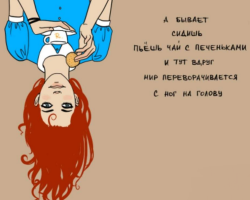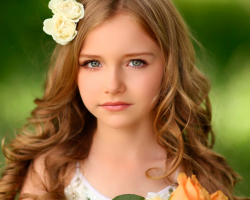Varieties and characteristics of the culinary fabric.
Content
- Cullar fabric - what is it: composition
- Cullarian fabric: description
- Cullar: Types of fabrics
- How does the culinary fabric behave after washing?
- Cullarian fabric: virtues
- The culinary fabric gives a shrinkage when washing or not?
- Which is better, a footer or a culinary?
- Interlock or Bouring, which is better?
- Futter, Interlock, Culinary What is the difference?
- Cullarian fabric: reviews
- Video: Cullarian fabric
Before giving birth, women arrange shopping for children's clothing, purchasing a lot of swing, body and sliders. Future mothers often study the composition of the fabric so that it is comfortable in wear and operation. The best for the manufacture of children's clothing is cotton fiber. In this article we will talk about fabric cULTENAnd we give consumer reviews.
Cullar fabric - what is it: composition
Culinary - This is a fabric made of thin cotton thread, which is distinguished by good performance.
Cullar fabric, what is the composition:
- If we take into account the main thread, then the fabric is fully consistent with the characteristics that the cotton has, but is slightly different in the thickness of the fiber. If the cotton is dense and heavy, while it is great, thenculinary - This is a very thin fabric, which is mainly used in the summer.
- It is made both with the addition of elastic fibers and without them. The thickness of the fiber can vary, but in general it is one of the thinnest paintings that has established itself well in the summer heat.
- From it most often made homemade clothes, night shirts, pajamas, and children's clothes. In winter, clothes from such fabric are practically not worn, due to low density. Therefore, if you expect replenishment in the family in the summer, be sure to prefer clothes made of this fabric.

Cullarian fabric: description
It is worth considering that the fabric reaches only in one direction, if you stretch it across. When stretching along the fibers, do not receive deformation. Therefore, almost all products are sewn on certain patterns so that the fabric stretches in width.
Cullar fabric, description:
- The density of the fabric is low, and is approximately 120-140 grams per square meter.
- The density, thickness of the canvas depends on the composition, may vary slightly.
- The basis of the fabric is cotton, but artificial fibers are introduced to increase the service life.

Cullar: Types of fabrics
There are several typescULIRSwhich can be found in the market.
Cullar, types of fabrics:
- With like. A very thin, knitted fabric, which is based on cotton. Due to the presence of a laike, it stretches pretty well and returns to its previous position. Due to the presence of a liraku, the wear of the fabric is minimal, so the canvas behaves well during washing in hot water. Due to the presence of a lique, the canvas does not shrink.

With like - You can findculinary With low content elastana and polyester fibers. This is a cheaper lookcULIRS, because part of the cotton is replaced by artificial threads. Good fabric, does not burn out, does not sit down when washing. If it is estimated to the touch, then the canvas is rude, and hard thanculinary, made of cotton.

With Elastan - The most expensive is the fabric with 100 % cotton content. There are no additional impurities in the composition. Usually shirts, T -shirts are made from such fabric. The fabric is completely matte, during washing gives a slight shrinkage.

Hb
How does the culinary fabric behave after washing?
The canvas behaves perfectly during both machine and manual washing. It can be washed, even at fairly high temperatures, which is very relevant during processing of children's clothing.
Cullar fabric after washing:
- If you evaluate the shrinkagecULIRS, then it differs, depending on the composition of the canvas. As indicated above, often cotton is combined withelastan Or polyester thread.
- If the canvas is made of one hundred percent cotton, then in the process of first washing it will shrink. Consider this when acquiring children's things.
- Take a size larger, because after washing in hot water, the canvas can sit.

Cullarian fabric: virtues
UcULIRS A mass of advantages, including universality. Typically, the canvas is used in the manufacture of children's and adult clothing. Depending on the typecULIRS, basically it is used in the summer, but there is a dense canvas that is suitable for sewing winter underwear. The main advantage is breathability. This is an ideal option for children, because the skin will not sweat, the probability of the appearance of the sweating is minimized.
Cullar fabric, dignity:
- Doesn't crash. Often, such clothes after washing in hot water are not crushed. It does not need to be stroked, because after washing it does not contain creases.
- The environmental friendliness of the canvas. It is absolutely safe for health. Another advantage is easy to use. There are no difficulties during washing and ironing of this underwear. You can use chemical cleaners and bleach to remove stains.
- It absorbs moisture, so the probability of rashes and discomfort is minimal. The child, even in the summer heat, will not feel discomfort, and the seams will not be worn. The fabric is durable, it does not burn out, even if you regularly give the washing in hot water, and dry in the sun.

The culinary fabric gives a shrinkage when washing or not?
Adding artificial fiber, such as Lycra, Elastan and Polyester reduces the degree of shrinkage, and makes the fabric resistant to wear.
The fabric of the backup gives a shrinkage when washing or not:
- However, there is a disadvantage, if pure cotton can be washed in very hot water, thenculinary With impurities of Elastan and Lirakh, it is necessary to wash at lower temperatures, because this can affect the strength of artificial fibers.
- Please note that it is best to use the minimum squeeze so as not to deform the fibers of the product. If it is used thinculinary, with a low density, it is impossible to wash it at high speeds, because this will reduce the life.
- The fabric will be worn out over time and will soon break. Therefore, for washing thincULIRS Use water with a temperature not higher than 40 degrees. Use an air at a speed of 400-500 rpm. If there are no artificial fibers in the composition, then pure cotton is allowed to wash in very hot water.

Which is better, a footer or a culinary?
Culinary And the footer is different fabrics, despite the fact that they are made of cotton fiber. They differ in density, the type of weaving, as well as the method of use. As indicated above,culinary Used for sewing home clothes, or children's things. Such things in the heat are perfectly absorbed by moisture and let the body breathe. A footer is a denser fabric that is made with the addition of wool, or lacra. Due to this, the fabric is highly density and strength, so it is used for sewing demi -season, or winter clothes. If you doubt which canvas to choose, focus on the season.
Which is better, a footer or a culinary:
- If you are looking for thin, children's things for summer heat, give preferencecULTEN. If you want the child not to freeze in kindergarten or during sleep, purchase pajamas and children's suits from a footer.
- On the back of the footer there is an insignificant, light comb that gives the density tissue. Despite the presence of this comb, the canvas allows the body to breathe and prevents the occurrence of sweating, rashes.
- This is the perfect fabric for the child, but in the cold season. Due to the high density, the footer is often used when sewing tracksuits, or thin ragans. FromcULIRS Such products are not made, due to the low density of the canvas.

Interlock or Bouring, which is better?
Interlock, as well asculinary, is a knitted fabric, which is distinguished by its composition and technology for the production of the canvas. If you compare these fabrics, theninterlock denser, thanks to the weaving method.
Interlock or scrap, which is better:
- The main advantageinterlock It is its composition, it consists of 100% cotton. Additionally, when weaving the canvas, no fibers are introduced. Because of this, the priceinterlock much higher thancULIRS.
- Uinterlock There are no front and wrong sides, the canvas looks the same on both sides. Outwardly resembles pigtails, tightly interconnected. Moreover, the drawing is preserved both from the front and the wrong side. If you accidentally touch this fabric, then the hole does not bloom due to the branding features.
- Culinary Often they are called stitch, and manufactured using hut technology. The canvas has a front and wrong side. On the front side, the canvas is braids located in the joint to each other. On the wrong side resembles a brickwork. If you hurtculinary, then from a small clue you risk getting a huge hole. When choosing fabric, consider the season when you are going to use clothes.Interlock - This is a fabric for sewing clothes to exit. Quite dense and holds the shape well.
If you choose a fabric for sewing summer, children's clothing, give preferencecULTEN. Despite the high densityinterlockif you take the fabric of the same thickness, then the wear resistance ofcULIRS Much higher, due to the features of weaving. When purchasing winter, demi -season clothes or t -shirts to exit, give preference to the interlock.

Futter, Interlock, Culinary What is the difference?
To choose clothes for the baby, take into account the characteristics of the fabric.
Footer, interlock, culinary what's the difference:
- The footer has a small cotton pile, so it is not suitable for a hot summer. This appliesinterlockbut it does not have a pile. Due to the features of weaving, the fabric is quite dense, but breathing.
- Interlock Choose to create a denser, children's clothing. Of course, this is not a winter version, but it is perfect during the off -season.Culinary - This is the thinnest of the presented materials, which is minimal density.
- Culinary It has the lowest wear resistance. This is due to the low density and thin thread of weaving. During washingcULIRS It is necessary to choose a delicate mode, and try to keep it away from direct sunlight.
- Culinary, interlock And the footer is used for the manufacture of children's clothing for various purposes. If it is pajamas in kindergarten, give preference to a funnel, which has a small comb. Even if the child swears, dense cotton fiber absorbs the remaining moisture. If you need children's clothing for a hot summer, purchaseculinary.

Cullarian fabric: reviews
Below you can familiarize yourself with the reviews of buyers who purchased clothes fromcULIRS.
Cullar fabric, reviews:
Oleg. I get underwear fromcULIRS Basically for the summer, so the fabric is thin, allows the skin to breathe. I work at a metallurgical enterprise, the work is very difficult, in hot conditions. TooHA sweat, but thanks to the scourge there is no sweatshirt.
Svetlana. I chose the fabric to sew sliders and vests to my child. My choice fell onculinary. I will not hide that I chose it precisely because of the price. If you evaluate the quality of the fabric, then it is quite thin, but with a careful washing, it can serve for a long time. I have a sad experience in using such fabric. She very quickly lost her color, stretched and deformed. But I am to blame, because I chose high temperature for washing. Now I wash only in water temperature water.
Olga. Last summer she gave birth to a child, so in the hospital it was necessary to purchase several sets of children's clothing. She gave preferencecULTENdue to the low density and naturalness of the canvas. The fabric is good, it does not change, but it requires a careful attitude. When choosing children's clothing, evaluate the composition of the fabric, and its density.

Many interesting articles can be found on our website:
- How to paint fabric, clothes, shirt at home
- How to sew a beautiful kitchen towel with your own hands as a gift for beginners









